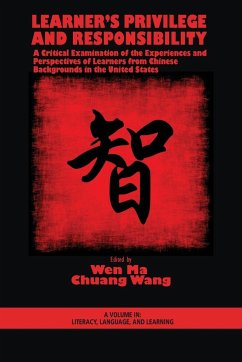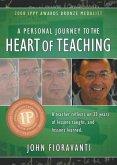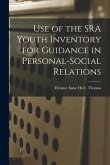David S. Walsh, Don Hellison, Paul M. Wright, Thomas J. Martinek
Teaching Personal and Social Responsibility through Physical Activity
David S. Walsh, Don Hellison, Paul M. Wright, Thomas J. Martinek
Teaching Personal and Social Responsibility through Physical Activity
- Broschiertes Buch
- Merkliste
- Auf die Merkliste
- Bewerten Bewerten
- Teilen
- Produkt teilen
- Produkterinnerung
- Produkterinnerung
The only comprehensive resource on the teaching personal and social responsibility (TPSR) model, Teaching Personal and Social Responsibility Through Physical Activity, Fourth Edition, reflects current research on using transferable life skills to support positive social change.
Andere Kunden interessierten sich auch für
![Write to Know: Nonfiction Writing Prompts for Elementary Physical Education Write to Know: Nonfiction Writing Prompts for Elementary Physical Education]() Amy WhitedWrite to Know: Nonfiction Writing Prompts for Elementary Physical Education12,99 €
Amy WhitedWrite to Know: Nonfiction Writing Prompts for Elementary Physical Education12,99 €![Social Responsibility and Sustainability Social Responsibility and Sustainability]() Social Responsibility and Sustainability50,99 €
Social Responsibility and Sustainability50,99 €![Examining Social Change and Social Responsibility in Higher Education Examining Social Change and Social Responsibility in Higher Education]() Examining Social Change and Social Responsibility in Higher Education166,99 €
Examining Social Change and Social Responsibility in Higher Education166,99 €![Manual of Drill and Calisthenics [microform]: Containing Squad Drill, Calisthenics, Free Gymnastics, Vocal Exercises, German Calisthenics, Movement So Manual of Drill and Calisthenics [microform]: Containing Squad Drill, Calisthenics, Free Gymnastics, Vocal Exercises, German Calisthenics, Movement So]() Manual of Drill and Calisthenics [microform]: Containing Squad Drill, Calisthenics, Free Gymnastics, Vocal Exercises, German Calisthenics, Movement So20,99 €
Manual of Drill and Calisthenics [microform]: Containing Squad Drill, Calisthenics, Free Gymnastics, Vocal Exercises, German Calisthenics, Movement So20,99 €![Learner's Privilege and Responsibility Learner's Privilege and Responsibility]() Learner's Privilege and Responsibility61,99 €
Learner's Privilege and Responsibility61,99 €![A Personal Journey to the Heart of Teaching A Personal Journey to the Heart of Teaching]() John FioravantiA Personal Journey to the Heart of Teaching14,99 €
John FioravantiA Personal Journey to the Heart of Teaching14,99 €![Use of the SRA Youth Inventory for Guidance in Personal-social Relations Use of the SRA Youth Inventory for Guidance in Personal-social Relations]() Use of the SRA Youth Inventory for Guidance in Personal-social Relations16,99 €
Use of the SRA Youth Inventory for Guidance in Personal-social Relations16,99 €-
-
-
The only comprehensive resource on the teaching personal and social responsibility (TPSR) model, Teaching Personal and Social Responsibility Through Physical Activity, Fourth Edition, reflects current research on using transferable life skills to support positive social change.
Hinweis: Dieser Artikel kann nur an eine deutsche Lieferadresse ausgeliefert werden.
Hinweis: Dieser Artikel kann nur an eine deutsche Lieferadresse ausgeliefert werden.
Produktdetails
- Produktdetails
- Verlag: Human Kinetics Publishers
- Fourth Edition
- Seitenzahl: 320
- Erscheinungstermin: 27. Mai 2025
- Englisch
- Abmessung: 254mm x 178mm
- ISBN-13: 9781718211957
- ISBN-10: 1718211953
- Artikelnr.: 72802948
- Herstellerkennzeichnung
- Libri GmbH
- Europaallee 1
- 36244 Bad Hersfeld
- gpsr@libri.de
- Verlag: Human Kinetics Publishers
- Fourth Edition
- Seitenzahl: 320
- Erscheinungstermin: 27. Mai 2025
- Englisch
- Abmessung: 254mm x 178mm
- ISBN-13: 9781718211957
- ISBN-10: 1718211953
- Artikelnr.: 72802948
- Herstellerkennzeichnung
- Libri GmbH
- Europaallee 1
- 36244 Bad Hersfeld
- gpsr@libri.de
Don Hellison, PhD, was a professor in the college of education at the University of Illinois at Chicago and was cofounder of the Teaching Personal and Social Responsibility Alliance. He worked extensively with high-risk youth, was a distinguished research fellow at Adelphi University, and was a visiting professor at numerous universities in the United States and in Canada. Much of Hellison’s work focused on the development, implementation, and evaluation of alternative physical activity program models that teach life skills and values, especially for underserved youth. He published numerous books, articles, and book chapters. Hellison received many awards, including the Gulick Medal (AAHPERD’s highest honor) and the International Olympic Committee’s President’s Prize. He received grant support for 25 projects, served on three editorial boards, and was editor of Quest for two years. He gave keynote addresses, made presentations at professional meetings, and conducted workshops for teachers and youth workers in most of the 50 U.S. states, several Canadian provinces, Israel, South Korea, Ireland, New Zealand, Australia, England, and Spain. He also served on numerous committees for several professional associations. Don Hellison passed away in 2018. Paul M. Wright, PhD, is a professor in the department of kinesiology and physical education at Northern Illinois University (NIU). He has specialized in the teaching personal and social responsibility (TPSR) instructional model since 1996, when he began working with Don Hellison. His scholarship is very applied and relates directly to fields such as positive youth development, social and emotional learning, and sport for development. Wright also has interests in policy and program evaluation in relation to youth sport and physical activity. He has published over 100 articles and book chapters, consulted for organizations such as UNESCO, and received funding from agencies such as the Robert Wood Johnson Foundation and the U.S. Department of State. Reflecting the influence of his scholarship, he has been inducted as a fellow in the National Academy of Kinesiology and served as the chair of SHAPE America’s Research Council. Wright leads the Physical Activity and Life Skills (PALS) Group at NIU, which serves as an engine for engaged scholarship on these topics. Tom Martinek, EdD, is a professor in the department of kinesiology at the University of North Carolina at Greensboro (UNCG). During his 47-year tenure at UNCG, Martinek has focused his research efforts on the social and psychological dynamics of teaching and coaching. Martinek's work has been published in journals such as Research Quarterly for Exercise and Sport, Journal of Teaching in Physical Education, Journal of Sport and Exercise Psychology, Quest, The Urban Review, Physical Education and Sport Pedagogy , International Journal of Sport Science, and Community Youth Development Journal. He has also authored or coauthored five books. He has spent the past 31 years directing and teaching in youth development programs that have served over 600 underserved youth. He also provides preservice and in-service staff development programs for national and international practitioners who work with at-risk and underserved children and youth. His work with kids is informed by his past research on teacher expectancy effects, learned helplessness, and resiliency of children and youth. David Walsh, PhD, is a professor in and the chair of the department of kinesiology at San Francisco State University. He specializes in physical activity–based youth development programs for youth in underserved urban communities. Walsh has almost 30 years of experience with the development of, implementation of, and research on the teaching personal and social responsibility (TPSR) model. He has published numerous book chapters and articles in journals such as Research Quarterly for Exercise and Sport; Quest; Journal of Physical Education, Recreation, and Dance; and Physical Education and Sport Pedagogy. He has given keynote speeches, lectures, and workshops in many of the U.S. states and internationally in Australia, England, New Zealand, Portugal, and Spain. His research includes successful university–community collaborations, innovative programs for helping youth envision positive possible futures, strategies for effective service learning, impact of physical activity–based youth development programs, and support of LGBTQIA+ youth in sport-based and physical activity–based programs. Walsh’s broader scholarship is related to teaching the TPSR model to preservice and in-service teachers.
Part I. Ideas
Chapter 1. A Brief History of TPSR
How It All Got Started
Evolution of the Model Itself
Apples Don’t Fall Far From The Tree
Not in the Margins Anymore
Final Thoughts
Chapter 2. What’s Worth Doing?
What’s Worth Doing for PE and PA Professionals?
Other Important Questions
Social Inequities and Trends
Our Commitments
Final Thoughts
Chapter 3. A Framework for Teaching Personal and Social Responsibility
Core Values
Assumptions
Levels of Responsibility
Program Leader Responsibilities
Gradual Empowerment (Shifting Responsibility to the Kids)
Self-Reflection
Integration
Transfer
Relationship With Kids
Daily Program Format
Final Thoughts
Chapter 4. Being Relational With Kids
Four Relational Qualities of TPSR Programming
Having the Courage to Confront
Relational Qualities and Relational Time
Program Leader Qualities and Skills
Kids and Their World
Final Thoughts
Part II. Strategies
Chapter 5. Levels of Responsibility
Progression of Levels
Cumulative Levels
Five Levels
Level Modifications
Levels and Empowerment
Final Thoughts
Chapter 6. Daily Program Format
Relational Time
Awareness Talk
Physical Activity Plan
Group Meeting
Reflection Time
Final Thoughts
Chapter 7. Embedding Responsibility in the Physical Activity Content
Physical Activity Content
Strategy Progression
Level I Strategies
Level II Strategies
Level III Strategies
Level IV Strategies
Level V Strategies
Final Thoughts
Chapter 8. Strategies for Specific Problems and Situations
Self-Reflection
Reflection-in-Action
Expanding Your Bag of Tricks
Level I: Individual Discipline Problems
Level I: Conflict Resolution Strategies
Level II: Teaching by Invitation
Level III: Struggles With Empowerment
Level IV: Helping and Leadership Problems
Level V: Specific Problems Outside the Gym
Final Thoughts
Part III. Implementation
Chapter 9. Coaching Clubs and Other TPSR Program Structures
Coaching Clubs
Cross-Age Teaching and Leadership
TPSR in Organized Sport
Responsibility-Based Fitness Centers
TPSR on the Playground and at Recess
TPSR in the Classroom
Schoolwide Adoptions of TPSR
Final Thoughts
Chapter 10. TPSR in PE Teacher and Coach Education
Teacher Education Approaches for Learning TPSR
Principles of Practice
Training Teachers and Coaches on TPSR Through Developmental Stages
Final Thoughts
Chapter 11. Assessment and Evaluation Strategies
Student Assessment
Teacher Evaluation
Program Evaluation
Final Thoughts
Chapter 12. Getting Started
Context
Self-Assessment
First Steps
Advanced Steps
Some Examples of Getting Started
Teaching as a Subversive Activity
Final Thoughts
Epilogue
Appendix A: Sample TPSR Lesson Plans
Appendix B: TPSR Implementation Checklist
Appendix C: Kinesiology Career Club Workbook
Appendix D: Tool for Assessing Responsibility-Based Education (TARE)
Post-Teaching Reflection Form
Appendix D: TPSR Feedback Form
Chapter 1. A Brief History of TPSR
How It All Got Started
Evolution of the Model Itself
Apples Don’t Fall Far From The Tree
Not in the Margins Anymore
Final Thoughts
Chapter 2. What’s Worth Doing?
What’s Worth Doing for PE and PA Professionals?
Other Important Questions
Social Inequities and Trends
Our Commitments
Final Thoughts
Chapter 3. A Framework for Teaching Personal and Social Responsibility
Core Values
Assumptions
Levels of Responsibility
Program Leader Responsibilities
Gradual Empowerment (Shifting Responsibility to the Kids)
Self-Reflection
Integration
Transfer
Relationship With Kids
Daily Program Format
Final Thoughts
Chapter 4. Being Relational With Kids
Four Relational Qualities of TPSR Programming
Having the Courage to Confront
Relational Qualities and Relational Time
Program Leader Qualities and Skills
Kids and Their World
Final Thoughts
Part II. Strategies
Chapter 5. Levels of Responsibility
Progression of Levels
Cumulative Levels
Five Levels
Level Modifications
Levels and Empowerment
Final Thoughts
Chapter 6. Daily Program Format
Relational Time
Awareness Talk
Physical Activity Plan
Group Meeting
Reflection Time
Final Thoughts
Chapter 7. Embedding Responsibility in the Physical Activity Content
Physical Activity Content
Strategy Progression
Level I Strategies
Level II Strategies
Level III Strategies
Level IV Strategies
Level V Strategies
Final Thoughts
Chapter 8. Strategies for Specific Problems and Situations
Self-Reflection
Reflection-in-Action
Expanding Your Bag of Tricks
Level I: Individual Discipline Problems
Level I: Conflict Resolution Strategies
Level II: Teaching by Invitation
Level III: Struggles With Empowerment
Level IV: Helping and Leadership Problems
Level V: Specific Problems Outside the Gym
Final Thoughts
Part III. Implementation
Chapter 9. Coaching Clubs and Other TPSR Program Structures
Coaching Clubs
Cross-Age Teaching and Leadership
TPSR in Organized Sport
Responsibility-Based Fitness Centers
TPSR on the Playground and at Recess
TPSR in the Classroom
Schoolwide Adoptions of TPSR
Final Thoughts
Chapter 10. TPSR in PE Teacher and Coach Education
Teacher Education Approaches for Learning TPSR
Principles of Practice
Training Teachers and Coaches on TPSR Through Developmental Stages
Final Thoughts
Chapter 11. Assessment and Evaluation Strategies
Student Assessment
Teacher Evaluation
Program Evaluation
Final Thoughts
Chapter 12. Getting Started
Context
Self-Assessment
First Steps
Advanced Steps
Some Examples of Getting Started
Teaching as a Subversive Activity
Final Thoughts
Epilogue
Appendix A: Sample TPSR Lesson Plans
Appendix B: TPSR Implementation Checklist
Appendix C: Kinesiology Career Club Workbook
Appendix D: Tool for Assessing Responsibility-Based Education (TARE)
Post-Teaching Reflection Form
Appendix D: TPSR Feedback Form
Part I. Ideas
Chapter 1. A Brief History of TPSR
How It All Got Started
Evolution of the Model Itself
Apples Don’t Fall Far From The Tree
Not in the Margins Anymore
Final Thoughts
Chapter 2. What’s Worth Doing?
What’s Worth Doing for PE and PA Professionals?
Other Important Questions
Social Inequities and Trends
Our Commitments
Final Thoughts
Chapter 3. A Framework for Teaching Personal and Social Responsibility
Core Values
Assumptions
Levels of Responsibility
Program Leader Responsibilities
Gradual Empowerment (Shifting Responsibility to the Kids)
Self-Reflection
Integration
Transfer
Relationship With Kids
Daily Program Format
Final Thoughts
Chapter 4. Being Relational With Kids
Four Relational Qualities of TPSR Programming
Having the Courage to Confront
Relational Qualities and Relational Time
Program Leader Qualities and Skills
Kids and Their World
Final Thoughts
Part II. Strategies
Chapter 5. Levels of Responsibility
Progression of Levels
Cumulative Levels
Five Levels
Level Modifications
Levels and Empowerment
Final Thoughts
Chapter 6. Daily Program Format
Relational Time
Awareness Talk
Physical Activity Plan
Group Meeting
Reflection Time
Final Thoughts
Chapter 7. Embedding Responsibility in the Physical Activity Content
Physical Activity Content
Strategy Progression
Level I Strategies
Level II Strategies
Level III Strategies
Level IV Strategies
Level V Strategies
Final Thoughts
Chapter 8. Strategies for Specific Problems and Situations
Self-Reflection
Reflection-in-Action
Expanding Your Bag of Tricks
Level I: Individual Discipline Problems
Level I: Conflict Resolution Strategies
Level II: Teaching by Invitation
Level III: Struggles With Empowerment
Level IV: Helping and Leadership Problems
Level V: Specific Problems Outside the Gym
Final Thoughts
Part III. Implementation
Chapter 9. Coaching Clubs and Other TPSR Program Structures
Coaching Clubs
Cross-Age Teaching and Leadership
TPSR in Organized Sport
Responsibility-Based Fitness Centers
TPSR on the Playground and at Recess
TPSR in the Classroom
Schoolwide Adoptions of TPSR
Final Thoughts
Chapter 10. TPSR in PE Teacher and Coach Education
Teacher Education Approaches for Learning TPSR
Principles of Practice
Training Teachers and Coaches on TPSR Through Developmental Stages
Final Thoughts
Chapter 11. Assessment and Evaluation Strategies
Student Assessment
Teacher Evaluation
Program Evaluation
Final Thoughts
Chapter 12. Getting Started
Context
Self-Assessment
First Steps
Advanced Steps
Some Examples of Getting Started
Teaching as a Subversive Activity
Final Thoughts
Epilogue
Appendix A: Sample TPSR Lesson Plans
Appendix B: TPSR Implementation Checklist
Appendix C: Kinesiology Career Club Workbook
Appendix D: Tool for Assessing Responsibility-Based Education (TARE)
Post-Teaching Reflection Form
Appendix D: TPSR Feedback Form
Chapter 1. A Brief History of TPSR
How It All Got Started
Evolution of the Model Itself
Apples Don’t Fall Far From The Tree
Not in the Margins Anymore
Final Thoughts
Chapter 2. What’s Worth Doing?
What’s Worth Doing for PE and PA Professionals?
Other Important Questions
Social Inequities and Trends
Our Commitments
Final Thoughts
Chapter 3. A Framework for Teaching Personal and Social Responsibility
Core Values
Assumptions
Levels of Responsibility
Program Leader Responsibilities
Gradual Empowerment (Shifting Responsibility to the Kids)
Self-Reflection
Integration
Transfer
Relationship With Kids
Daily Program Format
Final Thoughts
Chapter 4. Being Relational With Kids
Four Relational Qualities of TPSR Programming
Having the Courage to Confront
Relational Qualities and Relational Time
Program Leader Qualities and Skills
Kids and Their World
Final Thoughts
Part II. Strategies
Chapter 5. Levels of Responsibility
Progression of Levels
Cumulative Levels
Five Levels
Level Modifications
Levels and Empowerment
Final Thoughts
Chapter 6. Daily Program Format
Relational Time
Awareness Talk
Physical Activity Plan
Group Meeting
Reflection Time
Final Thoughts
Chapter 7. Embedding Responsibility in the Physical Activity Content
Physical Activity Content
Strategy Progression
Level I Strategies
Level II Strategies
Level III Strategies
Level IV Strategies
Level V Strategies
Final Thoughts
Chapter 8. Strategies for Specific Problems and Situations
Self-Reflection
Reflection-in-Action
Expanding Your Bag of Tricks
Level I: Individual Discipline Problems
Level I: Conflict Resolution Strategies
Level II: Teaching by Invitation
Level III: Struggles With Empowerment
Level IV: Helping and Leadership Problems
Level V: Specific Problems Outside the Gym
Final Thoughts
Part III. Implementation
Chapter 9. Coaching Clubs and Other TPSR Program Structures
Coaching Clubs
Cross-Age Teaching and Leadership
TPSR in Organized Sport
Responsibility-Based Fitness Centers
TPSR on the Playground and at Recess
TPSR in the Classroom
Schoolwide Adoptions of TPSR
Final Thoughts
Chapter 10. TPSR in PE Teacher and Coach Education
Teacher Education Approaches for Learning TPSR
Principles of Practice
Training Teachers and Coaches on TPSR Through Developmental Stages
Final Thoughts
Chapter 11. Assessment and Evaluation Strategies
Student Assessment
Teacher Evaluation
Program Evaluation
Final Thoughts
Chapter 12. Getting Started
Context
Self-Assessment
First Steps
Advanced Steps
Some Examples of Getting Started
Teaching as a Subversive Activity
Final Thoughts
Epilogue
Appendix A: Sample TPSR Lesson Plans
Appendix B: TPSR Implementation Checklist
Appendix C: Kinesiology Career Club Workbook
Appendix D: Tool for Assessing Responsibility-Based Education (TARE)
Post-Teaching Reflection Form
Appendix D: TPSR Feedback Form

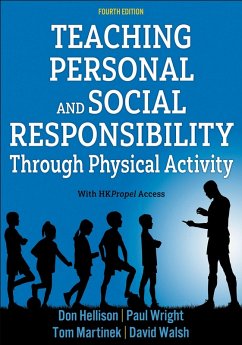

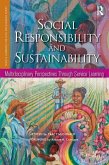
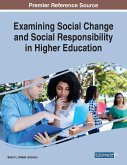
![Manual of Drill and Calisthenics [microform]: Containing Squad Drill, Calisthenics, Free Gymnastics, Vocal Exercises, German Calisthenics, Movement So Manual of Drill and Calisthenics [microform]: Containing Squad Drill, Calisthenics, Free Gymnastics, Vocal Exercises, German Calisthenics, Movement So](https://bilder.buecher.de/produkte/66/66170/66170881m.jpg)
